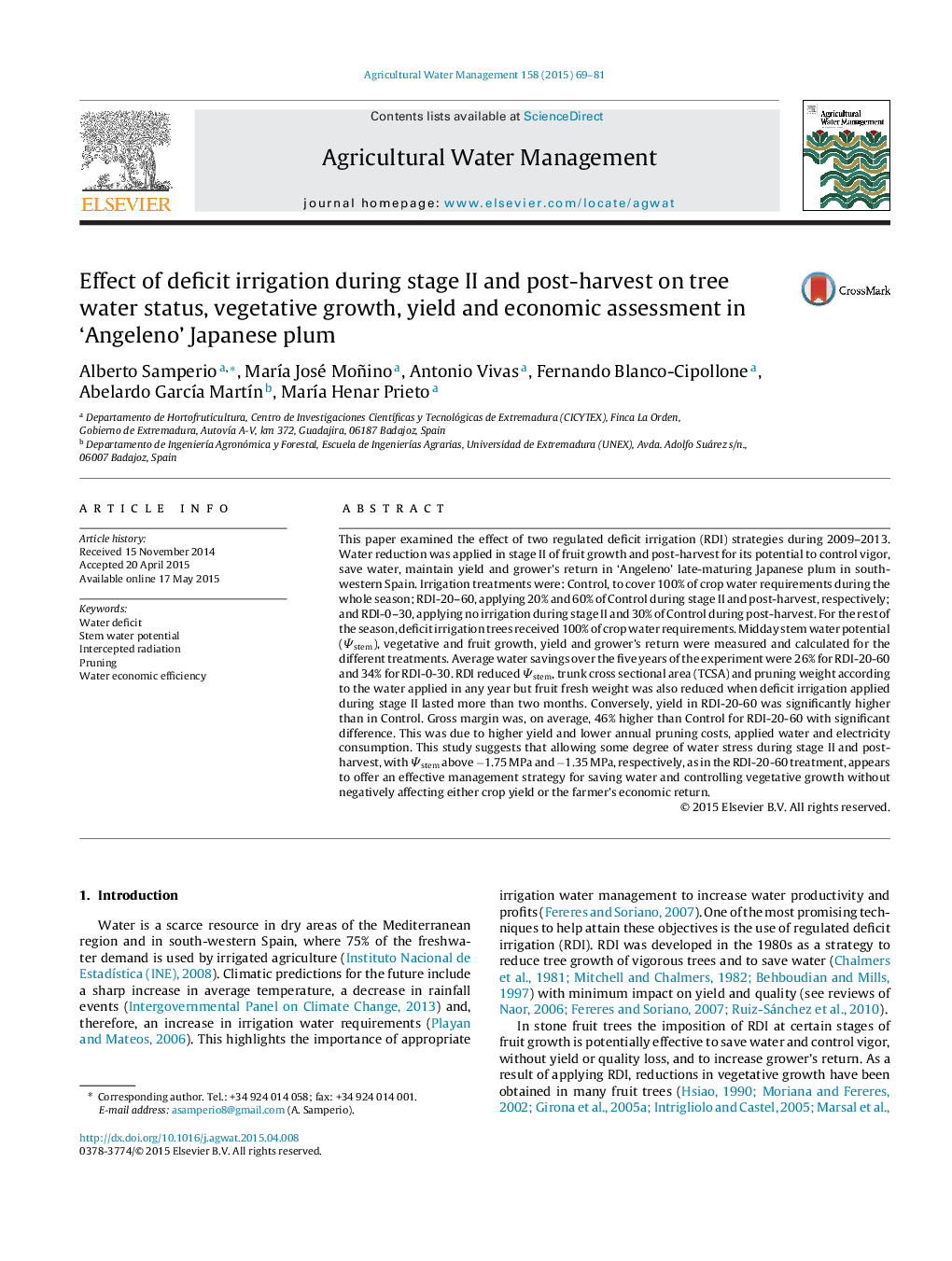| کد مقاله | کد نشریه | سال انتشار | مقاله انگلیسی | نسخه تمام متن |
|---|---|---|---|---|
| 4478423 | 1622921 | 2015 | 13 صفحه PDF | دانلود رایگان |

• Two RDI treatments were applied during stage II of fruit growth and post-harvest.
• RDI appears to offer an effective way to save water and control vigor.
• Fruit fresh weight was reduced when deficit irrigation was applied for more than two months during stage II.
• Reducing the amount water applied via irrigation by 30% increased both the yield and gross margin.
This paper examined the effect of two regulated deficit irrigation (RDI) strategies during 2009–2013. Water reduction was applied in stage II of fruit growth and post-harvest for its potential to control vigor, save water, maintain yield and grower's return in ‘Angeleno’ late-maturing Japanese plum in south-western Spain. Irrigation treatments were: Control, to cover 100% of crop water requirements during the whole season; RDI-20–60, applying 20% and 60% of Control during stage II and post-harvest, respectively; and RDI-0–30, applying no irrigation during stage II and 30% of Control during post-harvest. For the rest of the season, deficit irrigation trees received 100% of crop water requirements. Midday stem water potential (Ψstem), vegetative and fruit growth, yield and grower's return were measured and calculated for the different treatments. Average water savings over the five years of the experiment were 26% for RDI-20-60 and 34% for RDI-0-30. RDI reduced Ψstem, trunk cross sectional area (TCSA) and pruning weight according to the water applied in any year but fruit fresh weight was also reduced when deficit irrigation applied during stage II lasted more than two months. Conversely, yield in RDI-20-60 was significantly higher than in Control. Gross margin was, on average, 46% higher than Control for RDI-20-60 with significant difference. This was due to higher yield and lower annual pruning costs, applied water and electricity consumption. This study suggests that allowing some degree of water stress during stage II and post-harvest, with Ψstem above −1.75 MPa and −1.35 MPa, respectively, as in the RDI-20-60 treatment, appears to offer an effective management strategy for saving water and controlling vegetative growth without negatively affecting either crop yield or the farmer's economic return.
Journal: Agricultural Water Management - Volume 158, August 2015, Pages 69–81